
- For PC
- For MAC
- For Linux
- OS: Windows 10 (64 bit)
- Processor: Dual-Core 2.2 GHz
- Memory: 4GB
- Video Card: DirectX 11 level video card: AMD Radeon 77XX / NVIDIA GeForce GTX 660. The minimum supported resolution for the game is 720p.
- Network: Broadband Internet connection
- Hard Drive: 23.1 GB (Minimal client)
- OS: Windows 10/11 (64 bit)
- Processor: Intel Core i5 or Ryzen 5 3600 and better
- Memory: 16 GB and more
- Video Card: DirectX 11 level video card or higher and drivers: Nvidia GeForce 1060 and higher, Radeon RX 570 and higher
- Network: Broadband Internet connection
- Hard Drive: 75.9 GB (Full client)
- OS: Mac OS Big Sur 11.0 or newer
- Processor: Core i5, minimum 2.2GHz (Intel Xeon is not supported)
- Memory: 6 GB
- Video Card: Intel Iris Pro 5200 (Mac), or analog from AMD/Nvidia for Mac. Minimum supported resolution for the game is 720p with Metal support.
- Network: Broadband Internet connection
- Hard Drive: 22.1 GB (Minimal client)
- OS: Mac OS Big Sur 11.0 or newer
- Processor: Core i7 (Intel Xeon is not supported)
- Memory: 8 GB
- Video Card: Radeon Vega II or higher with Metal support.
- Network: Broadband Internet connection
- Hard Drive: 62.2 GB (Full client)
- OS: Most modern 64bit Linux distributions
- Processor: Dual-Core 2.4 GHz
- Memory: 4 GB
- Video Card: NVIDIA 660 with latest proprietary drivers (not older than 6 months) / similar AMD with latest proprietary drivers (not older than 6 months; the minimum supported resolution for the game is 720p) with Vulkan support.
- Network: Broadband Internet connection
- Hard Drive: 22.1 GB (Minimal client)
- OS: Ubuntu 20.04 64bit
- Processor: Intel Core i7
- Memory: 16 GB
- Video Card: NVIDIA 1060 with latest proprietary drivers (not older than 6 months) / similar AMD (Radeon RX 570) with latest proprietary drivers (not older than 6 months) with Vulkan support.
- Network: Broadband Internet connection
- Hard Drive: 62.2 GB (Full client)
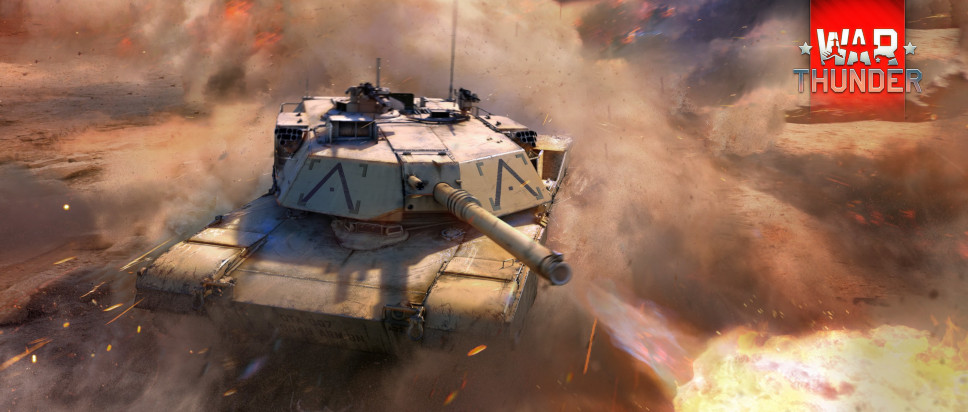
USMC veteran and active War Thunder player Conte_Baracca shares his recollections about active service in the M1A1 Abrams, and how this tank feels in our game.
Would you please tell us a bit about yourself? When did you decide to pursue a military career and why did you join The United States Marine Corps in particular?
I was born in 1975 and was raised in Oklahoma in the United States. While I was in high school I participated as a cadet in the Civil Air Patrol, a civilian paramilitary organization with a focus on search and rescue.
I enlisted in the United States Marine Corps Reserve my senior year. Upon graduating high school I went to “boot camp” at Marine Corps Recruit Depot in San Diego and would serve in the Reserves until I was commissioned an officer. After completing Marine Corps Recruit Training (boot camp) I attended the University of Oklahoma on an academic scholarship where I pursued and achieved a degree in History.
I attended Officer Candidate School while attending the University of Oklahoma and was commissioned a 2nd Lieutenant in the USMC Reserve after I completed my degree. In the USMC at the time the Reserve commission was more of a legal matter, I would serve on Active Duty in the Marines for the next four years before transitioning to an Active Commission and serving another 16 years. I was commissioned as a “ground” officer and after training at The Basic School for 6 months I would be designated a Tank Officer and begin tank officer training at Ft. Knox, Kentucky.
During my career as an officer I would serve in various positions. I would also work acquisitions for Project Manager Tanks as a Marine Liaison to PM Abrams (the US Army Abrams acquisition program). There I would work on various modernization programs for the tank. I retired from the USMC on March 1, 2017
I decided to pursue a military career when I was a teenager in high school. I found military vehicles fascinating and I also had a strong desire to go on adventures. I wanted to travel to distant lands, and I wanted to challenge myself on those travels. I also was excited at the prospect of pushing myself to my limits and working with motivated and dedicated people like you find in the USMC. Despite the challenges and the difficulty of the job and despite the challenges of serving during multiple wars I found the job rewarding and exciting and I stuck with it till I could retire.
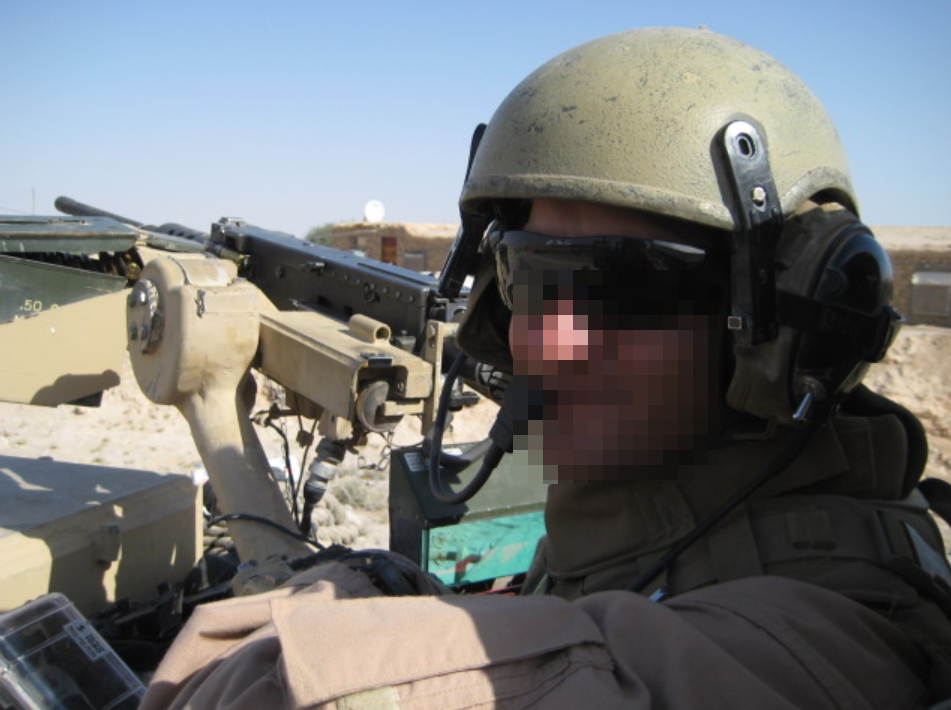
I chose the United States Marine Corps in particular due to its deserved reputation of being a cut above the other branches of the military. I wanted to challenge myself the most. I wanted to work with the best people. In short, I wanted to work with the elite. I was not disappointed.
What military vehicles and vehicle variants did you have experience with and when? Have you by any chance tried any Soviet-made equipment from the Iraqi army arsenal?
I worked with various military vehicles while I was in the Marine Corps. I conducted combat patrols on HMMWVs (both the lightly armored and up-armored variants), Cougar 4X4 and Cougar 6X6 MRAPs, as well as the M-ATV. My favorite, by far, was the Cougar 6X6. I, and many of my fellow Marines, referred to it as a “combat Cadillac.” It was comfortable (racer seats with five point harnesses) had excellent air conditioning, AC adapters so you could plug in your personal equipment, and plenty of space to carry your equipment. We even had room for cots so you didn’t have to sleep on the ground at night. While I engaged combat patrols in all of these vehicles I only ever engaged in actual combat in the lightly armored scout version of the HMMWV. We used the .50 caliber M2 Machine gun to good effect with the vehicle, but took little fire. A good thing as the armor was very weak on that particular model of the HMMWV.
When it comes to tanks I served on three subversions of the M1A1. The M1A1 Common, the M1A1 Heavy Common and the M1A1 Firepower Enhancement Package (FEP). The M1A1 Common was a variant with very limited numbers that was like the Heavy Common without the depleted uranium armor package. The use of the word “common” here is because the variant was “common” to both the USMC and the Army. There were changes from the base M1A1 that allowed the fitting of a fording (snorkel) kit, a digital engine control module, and the implementation of the Pulse Jet System (PJS, pronounced Pee-jazz) among some other minor changes. The Heavy Common was the same tank as the Common with the DU armor. The M1A1 FEP was a substantially modernized vehicle. It received an embedded diagnostic system, a 2nd Generation FLIR sight for the gunner, a Stabilized Commander’s Weapon Station (fully powered commander’s .50 cal that was stabilized to the same tolerances as the main gun and equipped with a thermal sight) a thermal driver’s sight, and a Far-Target Locate system that allowed the generation of an 8 digit grid for targets using the fire control system. It is the version we use in the USMC today and is a tremendously capable machine.
I served in combat in 2004 on the M1A1 Heavy Common, and in 2007 and 2008 in the M1A1 FEP, both in Iraq’s Al Anbar Province. Let me be clear, however, about my second tour. We never got into a fight. Iraq was a very peaceful place then and we spent our time mostly driving around the desert to disrupt infiltration routes and to secure major highways.
Iraq in 2004 was a very different story. There we engaged in months of steady combat operations around the city of Fallujah, Iraq. Personally I only engaged in seven shooting engagements, but between all of the elements of the company we participated in dozens of shooting engagements.
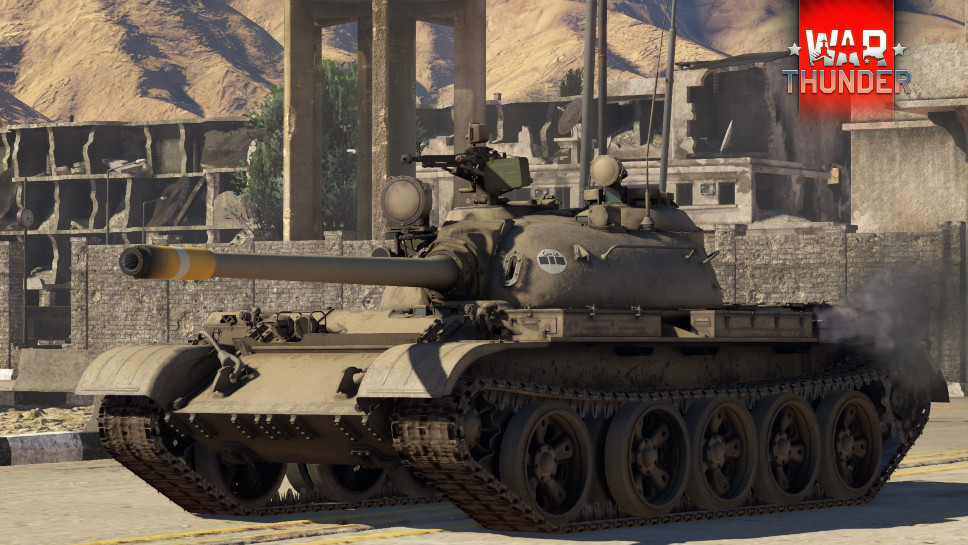
I did not get a chance to use non-American equipment in Iraq, but I did have an opportunity to work on a T-55A for a day as part of supporting pre-deployment training for other units. It is not really a fair comparison, the T-55A we had was barely functional and, obviously, a much older design, and a much, much older vehicle than the Abrams I was accustomed to. I think the most striking thing is just how small the T-55A is. But aside from that the storage of ammunition in the turret, right next to the crew, I found quite disturbing as a concept as I was accustomed to armored doors and blowout panels protecting the crew from the ammunition on the Abrams.
Could you please tell us a bit about what your M1A1 combat experience in Fallujah was like? What were your typical combat missions? What types of enemy weapons did you encounter there?
I fought in between the First and Second battle of Fallujah throughout the summer of 2004. Due to a lot of diplomatic and political considerations we were not allowed to actually enter the city. Consequently we engaged in a slow burn of shooting engagements as hostile forces within the city would opportunistically engage us from within the city while we were outside of it. However, we were, in secret, preparing for the second invasion of Fallujah, should it become necessary.
As an effort to support these preparations we engaged in several large scale “feints”. These were operations designed to look like full scale assaults upon the city that were not actual assaults. These operations would have all the hallmarks of modern combat: Close Air Support (CAS), drones flying overhead feeding us intelligence, artillery support, and, of course, my company’s tanks.
We would hold our fire and drive up to the edge of the city, the enemy would engage us with direct fire weapons, and then we would return fire and begin using CAS and artillery support. The enemy would, of course, engage us with small-arms fire, but that obviously was little threat to an Abrams. The primary threats in these engagements came in three forms.
(...) one time they did directly hit a tank on the turret roof all they did was pop the circuit breakers on the tank (...)
First, indirect fire from mortars. The enemy had many 82mm mortars and would attempt to engage us with them. However, this proved not to be much of an issue as they were not very accurate and the one time they did directly hit a tank on the turret roof all they did was pop the circuit breakers on the tank causing it to shut down. (Not my tank, it was a first platoon tank.) The crew reset the circuit breakers and restarted it almost instantly, quickly rejoining the fight. (It was tense at first. We thought the crew was incapacitated and tried desperately to communicate by radio with the vehicle. Of course the radio was not working as the tank was without power, however after a few moments the tank commander stuck his hand out through the commander’s hatch in a thumbs up gesture showing he and his crew were alright.)
Second, the venerable RPG-7. The enemy had many RPG-7s and would even employ them from within buildings. However, this would ultimately prove to be very little threat to us as well. The average fighter in Fallujah was poorly trained on the weapon system and, consequently, wasn’t very accurate. Even when they did hit, the armor on the Abrams proved more than sufficient to stop the RPG without the tank suffering any damage. Furthermore, the enemy rarely got more than one shot. Whenever they would fire an RPG at us we would use the powerful fire control system on the Abrams to immediately shoot a 120mm projectile back. Almost universally resulting in an explosive death for the RPG gunner.
The final threat came from recoilless rifles. The enemy had few of them and would mount them on trucks that they would use as a mobile reserve to engage our tanks. Unfortunately for them they were poor shots, and a truck is a fairly obvious target. Although, I did almost get knocked out by a recoilless rifle in one of our feints on the south east edge of Fallujah. The technical found a spot where he could just see the rear of my tank and I could not see him. He, fortunately, shot over my back deck twice before somebody in second platoon obliterated him with the tank main gun.
What types of rounds have you used and what can you say about their performance?
I, of course, used the two standard training rounds. The M865 TPCSDS-T (Target Practice Cone Stabilized Discarding Sabot – Tracer) round and the M831A1 HEAT-TP-T (High Explosive Anti-Tank – Target Practice – Tracer) rounds many, many times in training. Of note the HEAT round was inert (ballast in the round instead of explosives) and the training sabot actually has the highest muzzle velocity of any 120mm round. But, the sabot’s cone stabilization slowed it down rather quickly causing it to become ballistically unstable at approximately 9000 meters where it would invariably tumble to the ground. This was done to keep from accidentally shooting a round into civilian populations. The maximum range, for example, of the M829A1 is 88,438 meters when fired at maximum quadrant elevation (56 degrees). You generally don’t want that kind of thing happening in training.
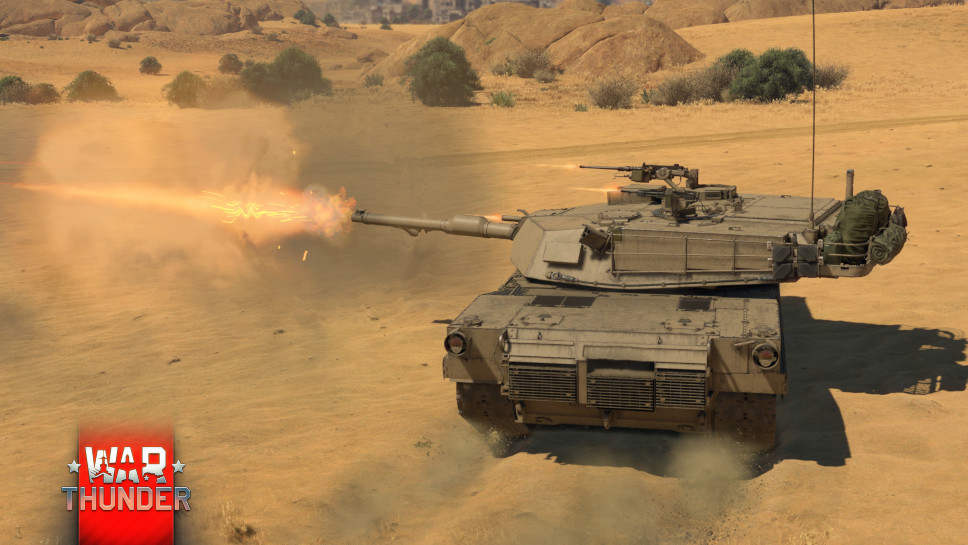
For service ammunition I fired the M830 HEAT-MP-T (High Explosive Anti-Tank – Multi-Purpose – Tracer) referred to as the HEAT round. The M830A1 HEAT-MP-T, referred to as EM-pat. The M908 HE-OR-T (High Explosive – Obstacle Reduction – Tracer) called the OH ARE. And the M1028 Canister round, called CAN.
Unfortunately the M1028 was developed as a result of feedback from combat operations (including Fallujah) and consequently didn’t enter service until after 2004, so I did not get to use it in combat. But I did get to use HEAT, MPAT, and OR in combat operations.
The HEAT round had the biggest boom, but as it was a shaped charge it was not ideally suited to fighting infantry in buildings. It was what we had so we made it work. We, in fact, killed many enemy troops and technicals with the round. However, it is highly likely many enemy troops survived the massive overpressure we would generate when we would hit a room and only the people directly in the path of the plasma jet from the Munroe effect died. There was a similar problem with the MPAT round as it was basically a HEAT round with a selectable fuze to engage a proximity mode for shooting at enemy aviation. The proximity fuze was not designed for ground use so we used it in point-detonating anti-tank mode. In that mode it’s basically the same thing as the M830 HEAT. The OR was a different story. It was an MPAT round with the switchable fuze removed and replaced with a steel cone and delay fuze. It was designed for operations in Korea where the round would be used to destroy retaining walls of huge piles of rocks established on many passes in South Korea, to deny the North Koreans the ability to use the mountain pass quickly. Unfortunately, Iraqi building construction was not nearly as formidable as these retaining walls and consequently the OR round would pass through the entire building (and usually the one behind it) before detonating. We compensated for this by aiming the projectile at where the building met the ground with the intent of shattering supporting walls. This achieved mixed results.
I did use the M1028 Canister round in training. It is essentially a giant shotgun shell that shoots 1000 tungsten balls in this eerily perfect pattern out of the gun tube at over 1400 meters per second. I would have loved to have had it in Fallujah. Could have really shredded the buildings with enemy troops in it.
Have you used all ammo storages during missions or was the main storage usually enough?
We would often have to use ammunition from the semi-ready rack. There were, in fact, several different models of ammo racks in use on Abrams tanks and ready racks could store between 16 and 18 rounds depending on which rack. It was very common to use these 16 to 18 rounds and have to access the semi-ready rack (behind the commander) to replenish ready ammo. This was a pure, unadulterated, pain in the ass. You make it way too easy in game. Way too easy. The armored ammo door behind the commander was mounted on a track INSIDE the track of the hydraulically operated loader’s door. So, to move ammo from the semi-ready you would have to pull a pin on the hydraulic piston from the loaders door and slide it around by hand. Meanwhile the commander’s ammo door required the use of a integrated lever to shift it out of its “locked” position and on to the track. This was extremely difficult. Then you had to slide both doors around by hand while pulling the rounds from behind the commander and moving them over to the ready rack. Once done you had to lock everything back up and reconnect the loader’s door. It took MINUTES to move one round. Although after you got started it went pretty quick as juggling the doors was the hardest part. I had to do this in combat one evening in September 2004 when it was about 150 degrees Fahrenheit (65.5 degrees Celsius) in the turret. I got heat exhaustion and ended up throwing up all down the side of the tank. (I didn’t care if I got shot, I didn’t want my crew to have to clean up my puke from the inside of the tank).
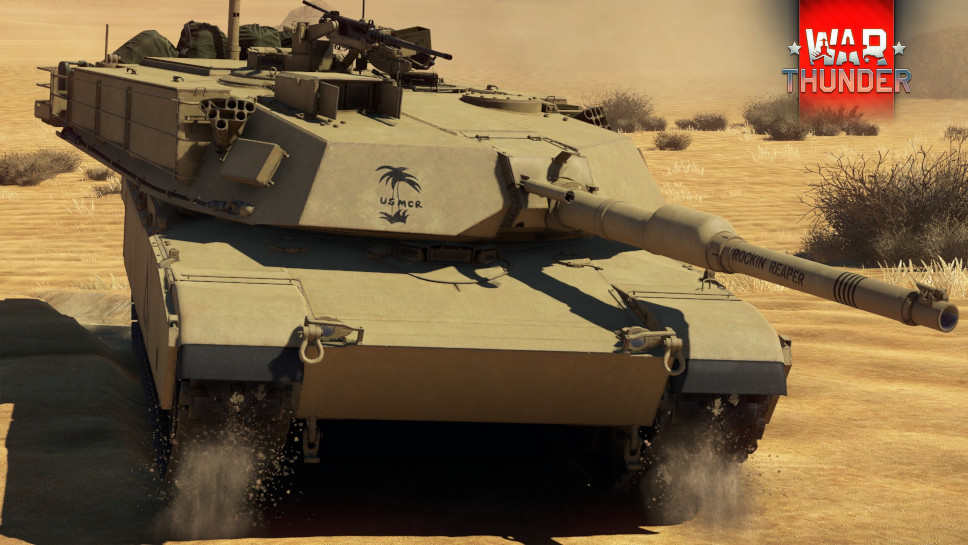
As far as we know, some tankers have been personalizing their M1A1s by giving them cool nicknames. Have you taken part in naming a tank yourself?
As an officer you usually wouldn’t name your tank. You would allow the enlisted crew to do that as they put much more effort into maintaining the tank while the officers were busy doing officer type stuff like planning meetings and writing orders. There were many good ones over the years ranging from double entendres like “We Like Bush” referring to the President of the United States and well…female anatomy. To my Executive Officer’s WAR PIG. However, in my combat operations we refrained from putting names, tactical markings, or anything else on our tanks as we were fighting an insurgency and we wanted to deny them the ability to track our movements and determine how many tanks we actually had.
Could you please tell us something about the most common tank failures you encountered during your service? Was the M1 Abrams easy to repair in the field?
The suspension and track. End of story. Suspension and/or track failures were the overwhelmingly most common problem we had with the tank in combat operations. In combat we would use freshly rebuilt tanks and rotate them in and out after about 1000 hours of operation. Thus the more complex pieces of the tank remained highly reliable. That’s not to say we didn’t have issues with the hydraulic system, the engines, or one of a million and one subsystems. We did. But suspension and track issues were far and away the most common issue. That’s why you always see spare track pieces and spare road wheels on tanks. They are the most likely thing to break.
The M1 was designed from the ground up to be repairable in the field.
The M1 was designed from the ground up to be repairable in the field. Even the most complex subsystem could be entirely removed with some socket sets and patience. The rear deck was completely removable so you could pull out the entire engine/transmission assembly. (We referred to it as the FUPP Full Up Power Pack) This would require the use of the M88 recovery vehicle which had an integrated crane, but it was relatively easy to do. You simply had to disconnect the final drives and there was a panel that had all of the engine inputs and outputs like fuel and electricity with quick release connections. It was a marvel of engineering to be honest.
When and how did you start playing War Thunder? How often do you play now and which game modes do you prefer?
I started playing War Thunder in June of 2017. It popped up in my Steam feed as a recommended game. About 5 seconds in to my first match I was hooked and never looked back. I love this game.
I am retired now so I have a lot of free time. I play every day usually for a few hours. I prefer gaming to watching television. And War Thunder has such a high level of entertainment and diversity It really holds my interest.
I play Air RB (Regular and Enduring Confrontation), Ground RB, and Naval RB (Regular and Enduring Confrontation). In order my favorite modes are Ground RB, Naval Enduring Confrontation RB, Air Enduring Confrontation RB, Naval RB, Air RB.
At the time this interview took place, our protagonist hadn’t yet researched the M1A1 in the game. The War Thunder team decided to rent him the tank, to allow him to be able to compare this combat vehicle both in the game, and in real life.
What did you feel when you first tried to play the M1A1 in War Thunder?
I felt a lot of different things.
First, there was a sense of obligation to do well in the M1A1 as I want to give the amazing real life tank its just due. I felt a lot of pressure to play well and remind everyone that the M1A1 has the best combat record of any tank ever made.

Second, There was this sense of the surreal. I spent so many months of my life living, training, and fighting on the M1A1 and I haven’t been on it in years. When you play it in War Thunder you are bombarded with memories of good times and bad, of fear and exultation, of stress and privation, as well as the thrill of using one of the most powerful engines of war ever built. Every part of playing the M1A1 in the game comes with a dozen memories, from remembering the procedure for using the Muzzle Reference Sensor when you see it at the end of the gun tube to drying off in the exhaust after getting rained on all night when you look at the exhaust grate.
Finally, it simply felt good. Like a piece of history I take very personally is being well remembered. Everyone gets a small taste of what it was like to fight on one simply by playing War Thunder. Obviously fighting a tank in real life is vastly different, but there is enough present in the game that it still feels like the best likeness possible. I enjoyed that very much.
What do you think about the visuals and the sound of the M1A1 in the game? Is this close enough to the real tank as you remember it?
The visuals are simply incredible. Granted there are slight visual differences between the USMC and the US Army M1A1, but in all the important ways the tanks are identical. Your model of the M1A1 is top notch. So authentic I can almost smell the metal. You captured everything on this tank. From the tiny windshield wipers on the driver’s central vision block to the locking pins for the skirt pins, everything is so meticulously represented. I could go on for paragraphs on how you so faithfully capture the look and feel of the exterior of the tank. The non-skid paint on the top of the tank turret and hull having the tiny shadows it would have in real life is a particularly delightful touch.
The visuals are simply incredible.
The sound. I will be 100% honest with you. The exterior sounds are a little too off for my immersion. I lack the sound engineer vocabulary but the engine sounds too “airy” it sounds more like a vacuum cleaner than the tank engine does. The tank has more of “whine” to it from the compressor fans. Also, in real life the loudest sound from the tank is the sound of the sprocket grabbing the track. When you hear M1A1s out in the wild there is more of a metallic growl from the teeth of the sprocket driving the track. That sound is definitely there in your model, and it’s actually a fairly decent facsimile of the sound in real life, and in many situations a very good representation. This is more of a problem when you are over 100 meters from the tank. That sound seems to disappear. The .50 cal is too metallic. You really don’t hear the action when you fire in real life. Just the boom boom boom of the explosion of the propellant and the bullet breaking the sound barrier. The Main Gun is impossible to replicate with speakers well. The sound is just so powerful. It is a crack that overwhelms your senses in a way no speaker can replicate.
The interior sounds are better. They actually give me a pretty good deal of immersion. However, the loudest thing you hear in the tank is the whine of the turbine. Since you are inside you don’t hear the “airy” exhaust sound at all, you just here the whine of the engine and the whine of the hydraulics when the tank is running. It permeates through everything drowning almost every other sound out. The game does a good job of having the engine being the loudest thing inside the tank and achieves a good amount of volume for both immersing yourself and not going deaf. However, it needs a fine tuning on the compressor versus exhaust noises. The firing of the machine guns is also much better from the inside of the vehicle. The coaxial 7.62 is particularly well represented as in real life the exhaust tube deflects all of the sound of the explosion of the propellant and the bullet breaking the sound barrier our of the vehicle, leaving the crew to mostly hear the action of the weapon cycling. The .50 cal is a different story as you would just get dull booms and not really hear the action at all in real life. The main gun is also very good, because it sounds as much like real life as it can, given the limitations of speakers. It is a much quieter sound to fire a main gun from inside a tank. The only thing missing is the loud DING of the aftcap from the round bouncing off the aftcap deflector after the breach automatically opens during the firing cycle of the main gun.
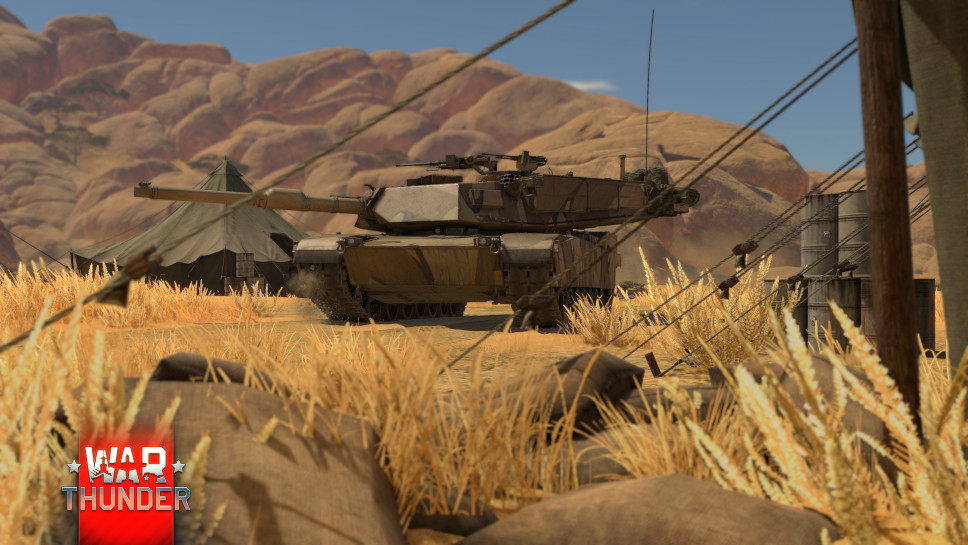
There’s a hot discussion about the actual M1 reload rate, since it depends totally on the loader’s skills. Based on your experience, is the M1 Abrams reloading time realistic in the game?
It is way too slow in game. We have a set of standards all tankers must pass before crewing a tank in combat or training. They are collectively known as the Tank Crew Gunnery Skills Test. There is a battery of tests that you have to go through Semi-Annually in order to be allowed on tanks. One of the skills is loading the main gun. The MAXIMUM loading standard to be allowed on the M1A1 is 7 seconds. Currently you allow 7.8 seconds for a novice crew. (It’s 5 seconds for the 105mm M1 and M1IP BTW). Practically, a good loader aims for a 4 second reload. And truly exceptional loaders can do it in as low as 3 seconds. Personally, my loaders could all beat 5 seconds even under the most arduous conditions. Well one didn’t, but my Tank Leader (a Master Sergeant) fired him after he routinely loaded in about 6.5 seconds.
Dev team comment.
It should be noted that this refers to the speed of reloading when the tank is stationary for a short series of 3-5 shots per minute. In such conditions, a well-trained loader can indeed demonstrate a loading rate of ~3-4 seconds per shot. And this is how loading tests are taken. In the game, in addition to the fact that the reload time is a balancing tool (for tanks without a loading mechanism), the maximum rate of fire (6 seconds) for the first stage rack of 18 shells can be achieved both stationary and in motion, and at high speed.
However, we do not exclude in future a change in the reloading parameters for the M1 tanks towards greater realism (dividing the main rack into more or less convenient ones, increased time for transferring shells from the commander side to the loader side, etc.).
Can you please give some kind of advice to the players that start playing the M1A1 in War Thunder?
First, use your Warbonds to buy universal backups (one of the best “free” deals in the game bar none) and double up on how many times you can spawn. Hiding in corners till the end of the match is NOT what this tank was designed to do. Your biggest advantages are your speed and your excellent fire control system. The M1A1 accelerates well, is fast, and has an excellent turret traverse. This tank was designed to ASSAULT things. It’s best to press that W key and not let go. Now, I’m not recommending you drive straight into the enemy (although on some maps that’s a great idea) but I am saying use your speed and fire control to get to where the enemy doesn’t expect you and use that snappy turret traverse and elevation in quick engagements before moving on to the next spot. Finally, your armor isn’t the best, but the blow off panels and the crew dispersion do help your survivability. So take some risks. If you lose, well the repair cost isn’t that bad. And if you win…
If you have excellent knowledge of the combat vehicles present in War Thunder and would like to share your memories of serving in the military and your impressions of the game, please send us an e-mail to [email protected].
The War Thunder Team




Comments (150)
Outstanding. Absolutely loved this. o7
Loved Conte's info on the reload. I've heard this from many tankers, and there are several videos online showing just how fast an Abram's crew can get rounds downrange. Thank you for your Service! You are an inspiration to us all.
Dozer15, Thanks.
A really, really good interview! Please do more things like this Gaijin!
We're glad you like it! We'll try to do more in the future.
Brilliant interview. One thing I love about WT despite its flaws is that it's one of the few games out their that can connect veterans to their memories of using their old vehicles.
Very good interview and interesting experience. I should also add that @Conte_Baracca is always active on the forum and always cool and friendly in his interactions.
Thanks!!!
Conte_Baracca, Hey Conte, what can you tell us about any encounter you had along British forces? Did u ever got close to any Challies? any deed?
survived mortar, rpg 7, recoiless gun in 1 city guess m1a1 is good tank : )
Best tank ever made. Though I might be biased.
Conte_Baracca, I have a friend that drove tanks. He says the M1 is also really fast. The game seems to limit it to about 40 mph but he said it will do 60 or more but it has a governor on it. Is that true?
These kind of blogs are pretty good, keep doing them.
That is so COOL, love the posts like this, keep it up Gaijin!
EveryDayHero, https://media1.giphy.com/media/QUY2pzDAKVpX3QacCg/200.gif
GunnyHighway, The classified components of the M1A1 were not discussed in this article at all. The information is all a matter of public record.
Such a great piece of interview and informations up there. So cool to let players express themselves over their real life experience with machinery. A great article! Thanks to the team and Conte_Baracca
To Gaijin: Excellent, love that you are taking the time to interview the soldiers that actually use this gear and share the story with us! To Conte_Baracca: Thank you for your service, and hope to see you often in game and on the forum!
Thanks!
This is a neat review from a war veteran, quite interesting too
Submit a complaint